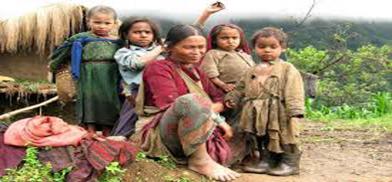Rise in poverty due to COVID-19 to affect children
The economic fallout of the COVID-19 pandemic could push up to 86 million more children in South Asia and sub-Saharan Africa into poverty by the end of this year, according to a report released on Monday by Save the Children and UNICEF

Kathmandu: The economic fallout of the COVID-19 pandemic could push up to 86 million more children in South Asia and sub-Saharan Africa into poverty by the end of this year, according to a report released on Monday by Save the Children and UNICEF.
This could see 672 million children in those countries living below the national poverty line. The impact of the crisis will be exacerbated in parts of the world also suffering from violent conflict.
“The coronavirus pandemic has triggered an unprecedented socio-economic crisis that is draining resources for families all over the world,” said UNICEF Executive Director Henrietta Fore, adding that the scale and depth of financial hardship threatened to roll back years of progress in reducing child poverty.
UNICEF and Save the Children warned that immediate loss of income due to the global economic crisis means families are less able to afford basic needs, access health care and education, and more at risk of child marriage, violence, exploitation and abuse.
The organisations further cautioned that lack of access to social safety nets or relief measures limited the ability to follow containment and physical distancing measures, increasing exposure to infection for poor families.
As it is, millions of children across the globe lack access to health care, education, proper nutrition, or adequate housing.
In Nepal, COVID-19 has already begun to impact children and derail the progress made in recent times, as the number of households living in poverty increases. Nepal’s multi-dimensional poverty rate had declined sharply in the past 20 years from 60% to 28%. This was largely due to remittance income from family providers working abroad, but the COVID-19 crisis will affect remittances as well.
According to the World Bank, Nepal’s migrant workers sent home US$8.1 billion in 2018, making the country 19th largest remittance receiver in the world. Remittances make up 30% of Nepal’s GDP – the highest proportion in Asia, and most of the money is spent on supporting families and children’s education.
But even before the pandemic hit, the rights of children in Nepal, as well as their social and physical well-being, faced serious obstacles. One in 3 children in the country are stunted and the under-5 mortality, although improving, is still high at 39 per 10,000 live births.
In addition, Nepal’s education sector, already facing inequity to access and challenges to quality, is now being forced to come to terms with a gaping digital divide as classes moving online in the wake of the pandemic excludes thousands of the poorest children across rural Nepal without proper connectivity or access to the internet altogether.
Save the Children and UNICEF called for a rapid and large-scale expansion of social protection systems and programs around the world to mitigate the impact of COVID-19 on vulnerable children.
The statement urged countries to invest in the social protection of children, fiscal policies, employment, and labour market interventions to support families. This includes expanding universal access to quality healthcare and other services and investing in family-friendly policies such as paid leave and childcare.
Governments across the world must also make critical investments that address immediate financial needs and lay the foundation to prepare for future shocks, the statement read.
Said Inger Ashing of Save the Children International: “This report should be a wake-up call for the world.”
https://www.nepalitimes.com/latest/rise-in-poverty-due-to-covid-19-to-affect-children/









Post a Comment